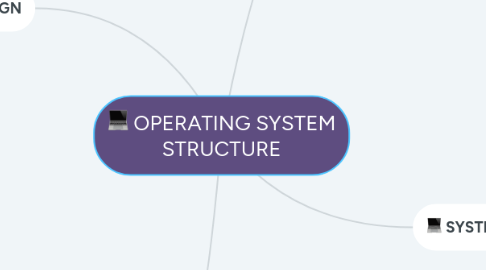
1. OPERATING SYSTEM SERVICES
1.1. PROGRAM EXECUTION
1.2. I/O OPERATION
1.3. FILE MANAGEMENT
1.4. COMMUNICATION
1.5. ERROR-DETECTION
1.6. ADDITIONAL -> RESOURCE -> ACCOUNTING -> PROTECTION & SECURITY
2. SYSTEM CALL
2.1. TYPES OF SYSTEM CALL
2.1.1. PROCESS CONTROL
2.1.1.1. - load/execute,end/abort - create/terminate process - get/set process attributes - wait for time/signal -allocate/fire memory
2.1.2. FILE MANAGEMENT
2.1.2.1. - create/delete -open/close -read/write -get/set file attributes
2.1.3. DEVICE MANAGEMENT
2.1.3.1. - request/release device - read/write data - get/ set attributes
2.1.4. INFORMATION MAINTENANCE
2.1.4.1. - get/ set time or date - get/ set system data - get/set attributes for process/file/device
2.1.5. COMMUNICATION
2.1.5.1. - create/delete connection - send/receive message - attach / detach devices
2.2. REGISTER
2.3. BLOCK/ TABLES
2.4. STACK ( ABSTRACT DATA )
3. OS DESIGN
3.1. MICROKERNEL
3.1.1. - small operating system care - contains only essential care operating systems function - many services traditionally included in the operating system are now external subsystems --> device drivers --> file systems --> virtual memory manager --> windowing system
3.2. LAYERED APPROACH
3.2.1. * ADVANTAGES - simplicity of construction - debugging * DISADVANTAGE -careful definition and interaction of the layers and less efficient.
3.3. GOALS & USER
3.3.1. - Operating system should be convenient to use, easy to learn, reliable, safe and fast.
3.4. SYSTEM GOALS
3.4.1. - operating system should be easy to design , implement, and maintain, as well as flexible, reliable, error-free, and efficient.

